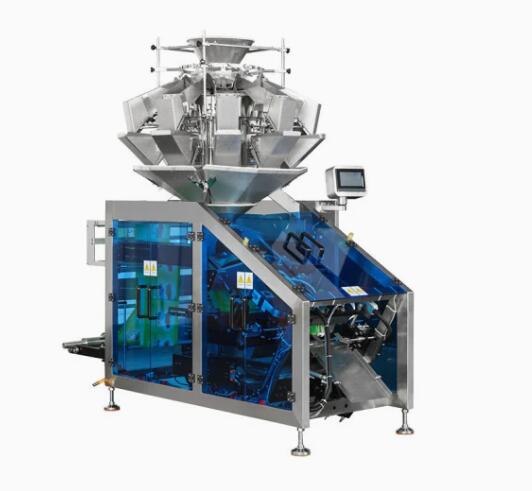A Comprehensive Guide to Packaging Materials Used in Packing Machinery
2024-09-07
The packaging industry has seen tremendous advancements over the years, driven by technological improvements and consumer demand for both efficiency and sustainability. Central to the success of any packaging process is the selection of the right materials. Whether it’s food, pharmaceuticals, or industrial goods, the type of material used in packaging machinery can make all the difference in product protection and presentation. Let’s explore some of the most common packaging materials utilized in modern packing machinery.
1. Plastic: The Go-To Material for Flexibility
Plastic is one of the most widely used packaging materials due to its versatility and cost-effectiveness. It offers flexibility, durability, and protection across many industries.
- Low-Density Polyethylene (LDPE): This flexible material is used in shrink and stretch films, which are common in pallet wrapping and product bundling. LDPE works well with machinery that applies heat to shrink the plastic for a secure fit around products.
- High-Density Polyethylene (HDPE): Known for its toughness, HDPE is used in blow-molded containers and bottles, making it ideal for packaging liquid products. Machinery like blow molders and bottling machines frequently handle HDPE materials.
- Polyester (PET): Widely used in the food and beverage industry, PET is strong and lightweight. It’s frequently used in packing machinery for bottling carbonated drinks and sealing food containers.
These plastics are essential for automated packing lines, with machines designed for wrapping, sealing, and filling operations tailored to plastic materials.
2. Paper and Cardboard: A Sustainable Choice
Paper-based packaging materials have gained popularity due to their sustainability and recyclability. These materials are ideal for companies seeking eco-friendly alternatives to plastic.
- Folding Carton: Cardboard folding cartons are widely used in industries like pharmaceuticals, food, and cosmetics. Packaging machinery for these materials includes carton erectors, tray formers, and folding machines.
- Paperboard: Thinner than corrugated cardboard, paperboard is used for packaging lightweight products like cereals, soaps, and cosmetics. Packaging machinery like die-cutting systems and automatic cartoning machines handle paperboard efficiently.
The demand for sustainable packaging materials has increased the use of paper-based solutions, and packing machinery is now designed to accommodate these materials without compromising efficiency.
3. Foam and Cushioning Materials: Protection and Stability
For delicate items or products that require extra protection, foam and cushioning materials are used in packaging to prevent damage during transit.
- Polyethylene Foam: This cushioning material is lightweight yet durable, making it ideal for protecting fragile items like electronics and glassware. Foam-in-place packing systems and automated void-fill machines work well with polyethylene foam.
- Air Pillows and Bubble Wrap: Air-filled packaging materials are used to fill voids in shipping boxes, ensuring that products don’t shift during transportation. Packing machinery for air pillows and bubble wrap includes air-fill machines and automatic void-fillers.
These protective packaging materials are essential in industries that handle fragile or high-value products, ensuring safe delivery to consumers.
4. Metal: Durability and Strength
Though not as common as plastic or paper in automated machinery, metal packaging remains important in certain industries due to its durability and barrier properties.
- Aluminum Cans: Widely used in the beverage industry, aluminum cans provide excellent protection against light and air. Machinery for filling and sealing aluminum cans is designed for high-speed production to keep up with demand.
- Steel Drums and Containers: For industrial goods and chemicals, steel drums provide a secure and durable packaging option. Automated drum-filling and sealing machines are used in industries that require heavy-duty packaging for large quantities of product.
Metal packaging is commonly used for products that require long shelf life and a robust, tamper-resistant container.
5. Compostable and Biodegradable Materials: The Future of Packaging
With increasing environmental concerns, the demand for compostable and biodegradable packaging materials is on the rise. These materials are designed to break down naturally, reducing their impact on the environment.
- Biodegradable Plastics: Derived from natural sources like corn starch, biodegradable plastics are used in packaging for food products, bags, and disposable items. Packaging machinery designed for these materials operates similarly to traditional plastic-packaging machines but is optimized for the unique properties of biodegradable plastics.
- Compostable Films: Compostable films, made from plant-based materials, are becoming popular for packaging food items and other perishable goods. Automated packing machinery such as form-fill-seal machines can be adapted to handle compostable films.
As the packaging industry moves towards greener solutions, biodegradable and compostable materials are becoming essential, and machinery must evolve to support these innovations.
Conclusion
From flexible plastic films to eco-friendly biodegradable materials, the range of packaging materials used in packing machinery is vast and varied. Each material offers unique benefits, whether it’s for durability, sustainability, or protection. As packaging technology continues to advance, manufacturers can choose the right materials that meet both consumer needs and environmental goals. Understanding these materials and their applications helps ensure optimal performance in any packaging operation.



